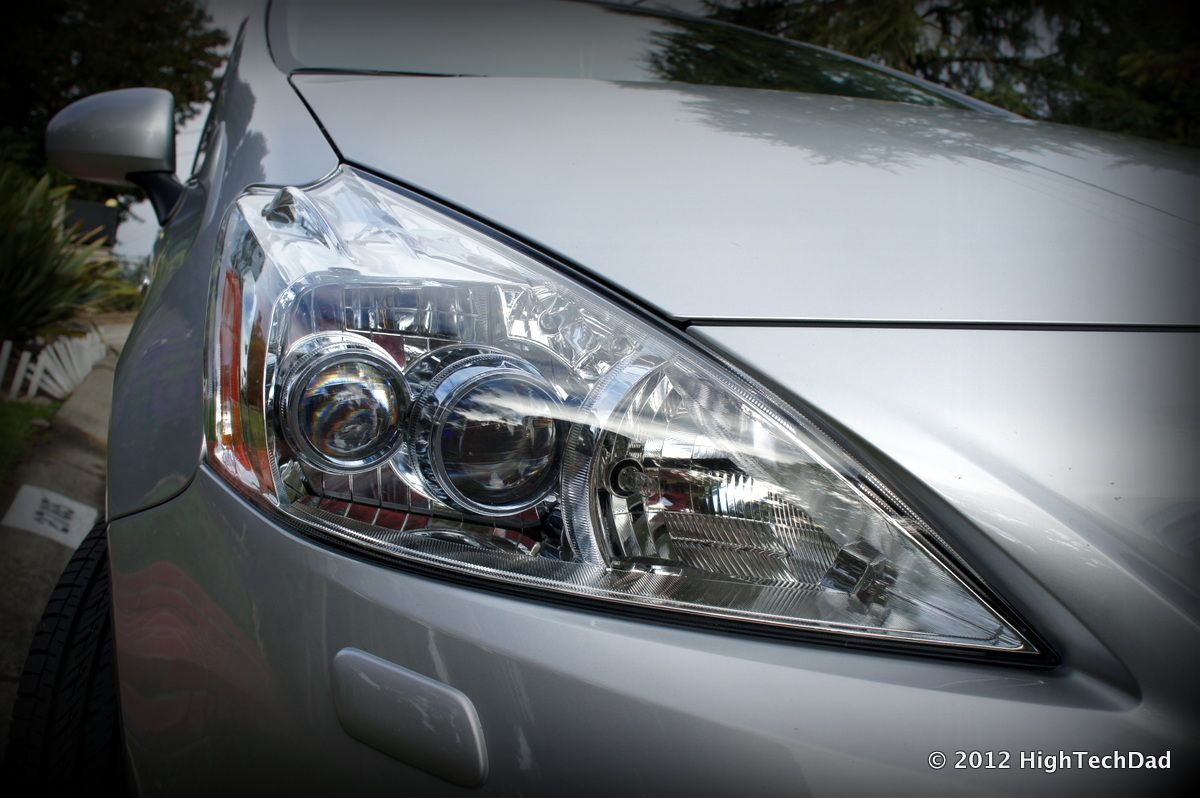
The 1970s: a decade often remembered for bell bottoms, disco, and a certain malaise, but for us gearheads, it was also a golden age for a truly iconic American vehicle – the station wagon. These magnificent machines weren’t just about getting from point A to point B; they were the quintessential family road-trippers, the weekend adventure carriers, and often, the unsung heroes of suburban driveways. Long before the SUV became the undisputed king of the road, wagons offered an unparalleled blend of practicality, space, and a unique style that continues to capture the hearts of car enthusiasts today.
Imagine piling into the vast expanse of a wood-paneled cruiser, windows down, the wind whipping through your hair on the way to the beach or a cross-country adventure. That’s the indelible image of the 70s wagon – a symbol of freedom, versatility, and the American way at its finest. They combined ample room for families, gear, and the occasional pet, making them a favorite among suburban families who needed a vehicle that could do it all, without sacrificing an ounce of character.
Today, we’re taking a deep dive, a genuine trip down memory lane, to celebrate some of the absolute best station wagons that graced the roads of the 1970s. We’re talking about more than just specifications; we’re exploring the cultural impact, the design philosophies, and the sheer driving experience that made these wagons truly special. So buckle up, because we’re about to explore the first seven unforgettable models that defined an era when the journey truly was just as fun as the destination.

1. **Ford Country Squire: The Wood-Paneled King of the Suburbs**There’s arguably no station wagon more iconic, more deeply embedded in the collective American psyche, than the Ford Country Squire. This magnificent beast, known for its distinctive wood paneling and cavernous interior, wasn’t just a car; it was a cultural phenomenon. Introduced in the early ’50s, it gracefully evolved throughout the decades, but those ’70s models? They are particularly beloved, representing the pinnacle of family hauling with undeniable style. With seating for up to eight people, this wagon was the undisputed champion for larger families and those epic road trips that built lifelong memories.
Beneath that expansive hood, the Country Squire wasn’t messing around; it offered a range of powerful V8 engines, ensuring it was more than just a spacious people-mover. This meant it was not only adept at swallowing luggage and kids but was also incredibly capable of towing trailers and boats with remarkable ease. It was the complete package for families who lived life to the fullest, blending everyday utility with serious grunt.
The interior of the Country Squire was designed for long-haul comfort, featuring plush seating that invited relaxation on those endless journeys. Its large cargo space was legendary, able to swallow everything from camping gear to weekly groceries without breaking a sweat, truly cementing its status as a family favorite. It’s the kind of car you didn’t just drive; you experienced it, forming an integral part of countless childhoods across suburban America.
In 1972, the Ford LTD Country Squire, a name synonymous with this grand wagon, underwent a major redesign. It became larger than ever, capable of seating up to ten passengers, truly setting a new standard for capacity. Ford also unified its design between the sedan and SW models of the same line, creating a cohesive look for the discerning buyer. And who could forget the impressive “Magic Doorgate” from the 1969 model, a true marvel of engineering that allowed the tailgate to open by swinging it down, out with the window, or up? That kind of innovation was pure genius.
Car Model Information: 2018 Cadillac XT5 Base
Caption: 1988–1989 Ford LTD Country Squire
Name: Ford Country Squire
Manufacturer: Ford Motor Company
Class: Full-size,station wagon
BodyStyle: station wagon
ModelYears: 1950–1991
Predecessor: 1941 Ford#1948
Related: Mercury Colony Park,Ford Country Sedan,Ford Ranch Wagon
Categories: 1960s cars, 1970s cars, 1980s cars, 1990s cars, All articles with dead external links
Summary: The Ford Country Squire is a series of full-size station wagons that were assembled by American automaker Ford. Positioned as the top-level station wagon of the Ford division, the Country Squire was distinguished by woodgrain bodyside trim. From 1950 through the 1991 model years, eight generations of the Country Squire were produced. Following the discontinuation of Edsel Bermuda, Mercury marketed the Mercury Colony Park as a divisional counterpart of the Country Squire, sharing bodywork and trim while the Mercury was not available with a six cylinder engine and was more expensive due to the optional equipment on the Ford that was standard on the Mercury.
As part of the full-size Ford model range, the Country Squire was the top trim package station wagon counterpart of several model lines. For its first two generations, the Country Squire was based upon the Ford Custom Deluxe and the Ford Crestline that replaced it, along with the more modestly equipped Ford Country Sedan which was identical in dimensions except for the woodgrain appearance and minimal standard equipment. For its next three generations, the Country Squire was a distinct model range; initially sharing its trim with the Ford Fairlane, the Country Squire later adopted trim of the Ford Galaxie. For its final two generations, the Country Squire became a counterpart of Ford LTD and the Ford LTD Crown Victoria after its downsizing for the last generation, while sharing multiple passenger accommodation duties with the Ford Aerostar.
The Country Squire was discontinued as part of the development of the 1992 Ford Crown Victoria and passenger carrying duties were given to the Ford Windstar. The decline in full-size station wagon sales meant the Crown Victoria was exclusively a four-door sedan. The 41-year production run of the Country Squire is the third-longest of a Ford car nameplate in North America, surpassed only by the Ford Thunderbird and Ford Mustang which is to date still in production.
The term squire is a British term that refers to a village leader or a lord of the manor, which is also called a “squire”, and the term was applied to members of the landed gentry.
Get more information about: Ford Country Squire
Buying a high-performing used car >>>
Brand: Ford Model: Country Squire
Price: $21,937 Mileage: 23,247 mi.

2. **Chevrolet Malibu Station Wagon: Style Meets Substance for the Modern Family**When the Chevrolet Malibu Station Wagon rolled onto the scene in 1978, it quickly carved out a significant niche, becoming an instant hit as part of the incredibly popular Malibu line. This wasn’t just another wagon; it represented a thoughtful evolution, boasting a sleek design and a highly practical layout that resonated deeply with families. It struck a near-perfect balance, offering a compelling blend of style that turned heads and the robust functionality that busy households demanded, cementing its status as a go-to choice for countless American families.
The Malibu offered more than just good looks; it promised a smooth, comfortable ride, making long journeys a pleasure rather than a chore. Under its hood, buyers could choose from several engine options, including a V6 that provided solid, dependable performance without being overly thirsty – a significant consideration during the decade’s oil crises. It was intelligently designed to be compact enough to navigate the often-cramped city streets with ease, yet surprisingly spacious and capable enough to tackle those spontaneous weekend adventures, making it a versatile companion throughout the latter half of the ’70s.
Delving deeper, the lineage of the Malibu wagon includes the noteworthy Chevelle Malibu Classic Estate Wagon, a true gem mentioned carrying the “almost inevitable Chevy Rally wheels.” This particular iteration was about blending muscle with genuine utility, especially with a formidable 7.4-liter V8 under the hood. This wasn’t a wagon content with merely hauling groceries; it was built with enough grunt to make you reconsider what a family car could do, even capable of “overtaking Mustangs.”
General Motors, in the 1970s, lavished the Malibu trim with some of the best upholstery, most appealing trim, and an array of desirable features, elevating its status within the segment. While it was undeniably a thirsty vehicle, “drinking gas like a camel,” its combination of comfort, power, and sophisticated interior appointments made it a highly desirable option for families who wanted to travel in style and command respect on the open road. The Malibu wagon, whether in its Chevelle guise or later iterations, truly embodied a unique blend of performance and practicality that was deeply appreciated by its owners.
Car Model Information: 2018 Cadillac XT5 Base
Name: Chevrolet Malibu
Manufacturer: Chevrolet
ModelYears: 1964–1983,1997–2025
Class: Mid-size car
Layout: Front-engine, rear-wheel-drive layout
Predecessor: Chevrolet Chevelle
Successor: Chevrolet Celebrity
Caption: Ninth generation Chevrolet Malibu
Categories: 1970s cars, 1980s cars, 1990s cars, 2000s cars, 2010s cars
Summary: The Chevrolet Malibu is a mid-size car that was manufactured and marketed by Chevrolet from 1964 to 1983 and from 1997 to 2025. The Malibu began as a trim-level of the Chevrolet Chevelle, becoming its own model line in 1978. Originally a rear-wheel-drive intermediate, GM revived the Malibu nameplate as a front-wheel-drive car in 1997.
Named after the coastal community of Malibu, California, the Malibu has been marketed primarily in North America, with the eighth generation introduced globally. Malibu production in the US ended in November 2024, as the Fairfax plant is being retooled for the upcoming second-generation Chevrolet Bolt. The Malibu is now the last sedan to have been sold by Chevrolet in the US.
Get more information about: Chevrolet Malibu
Buying a high-performing used car >>>
Brand: Chevrolet Model: Malibu Station Wagon
Price: $21,937 Mileage: 23,247 mi.
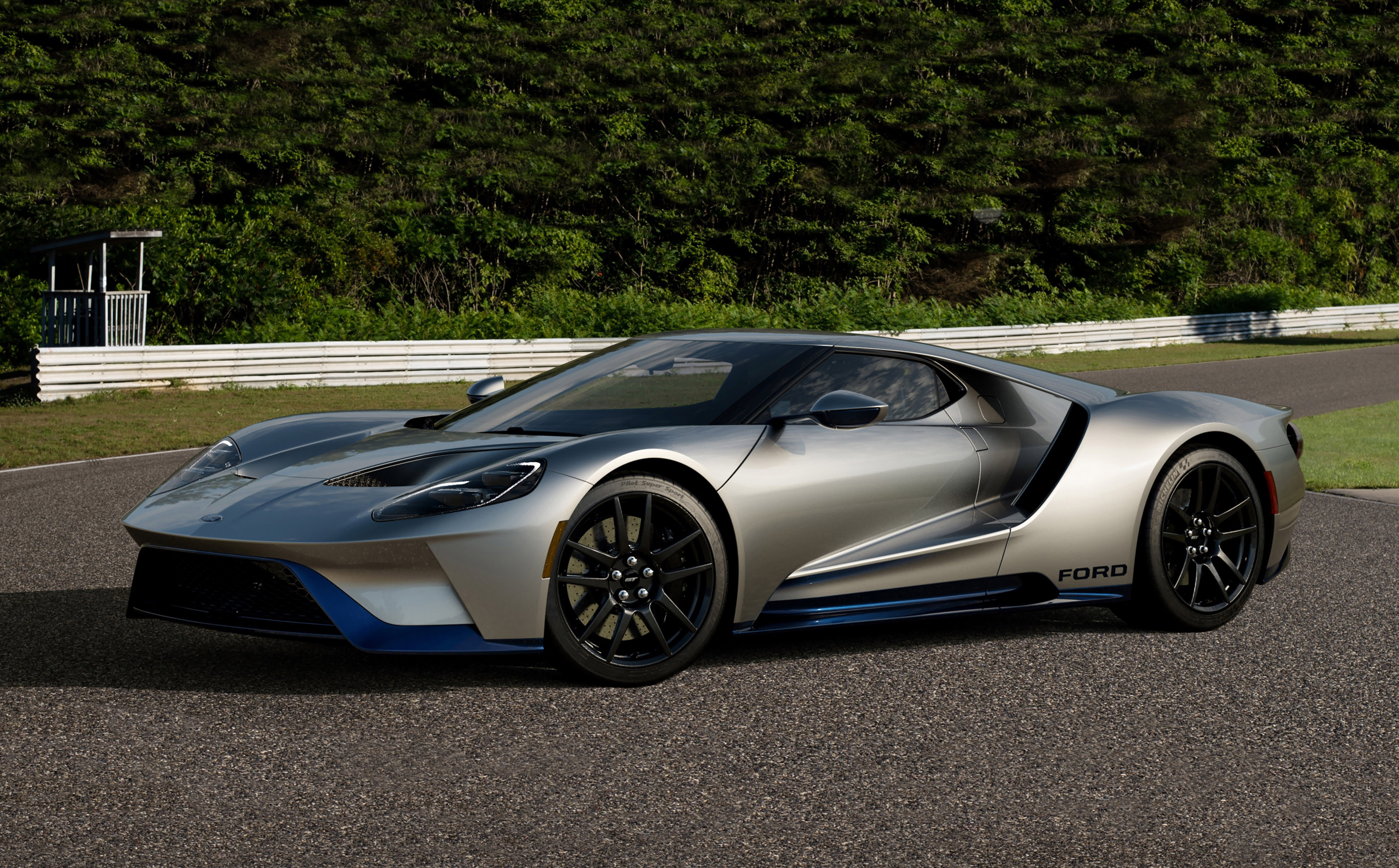
3. **Ford Pinto Cruising Wagon: The Groovy Custom Van-Inspired Compact**In the mid-1970s, Ford tapped directly into the burgeoning custom van craze with a daring and distinctive offering: the Pinto Cruising Wagon. Introduced in mid-1977 as a spirited variant of the standard Pinto wagon, this vehicle was anything but ordinary. It instantly grabbed attention with its unmistakable bubble windows adorning the sides, paired with flashy graphics packages that perfectly capitalized on the era’s counter-culture automotive aesthetic. This was a wagon designed to make a statement, a compact rebel with a cause.
The Cruising Wagon wasn’t just about exterior flash; it came equipped with a host of cool features that enhanced its sporty appeal. Slotted wheels gave it a muscular stance, while a sport gauge package hinted at a more engaging driving experience. And the color options? They were bold, vibrant, and perfectly ’70s, with Tangerine being a particularly eye-catching choice. This was a car for those who wanted to stand out, to cruise with a bit of funk and flair, all wrapped up in a practical wagon body.
Step inside, and the vibrant theme continued with an interior boasting plaid upholstery and striped accents that screamed 1970s cool. While exact sales numbers might be unclear, the Cruising Wagon, produced from 1977 to 1980, undeniably left its mark. Today, these vehicles are incredibly rare and increasingly collectible, cherished as a unique and often humorous slice of 1970s automotive culture. And as the context reassuringly notes, “Thankfully this model did not have the same fear factor as their car namesake” – a small mercy, indeed.
Before its custom-van-inspired iteration, the standard Ford Pinto Wagon, particularly the 1973 model with the Squire Option, was a compact and incredibly affordable choice for families. Known for its small size, it was remarkably easy to maneuver through bustling city streets, yet offered a surprising amount of cargo space for a compact wagon. The Pinto’s low price point, commendable fuel efficiency, and sheer practicality made it a go-to for budget-conscious buyers seeking dependable transport. Despite its controversial reputation due to fuel tank safety concerns, the Pinto Wagon, with its quirky styling and functional design, secured its place as an iconic piece of 1970s automotive history.
Car Model Information: 2018 Cadillac XT5 Base
Name: Ford Pinto
Caption: Ford Pinto
Manufacturer: Ford Motor Company
Aka: Mercury Bobcat
Production: September 1970 – July 1980
ModelYears: 1971–1980 (Pinto),1974–1980 (Bobcat)
Assembly: Edison, New Jersey,Milpitas, California
Designer: Robert Eidschun (1968)
Class: Subcompact car
BodyStyle: Sedan (automobile),sedan delivery,station wagon,hatchback
Related: #Mercury Bobcat (1974–1980),Ford Mustang (second generation)
Layout: Front-engine, rear-wheel-drive layout
Chassis: Unibody
Engine: unbulleted list
Abbr: on
Disp: Ford Cologne engine
Transmission: unbulleted list
Wheelbase: 94.0 in
Length: 163 in
Width: 69.4 in
Height: 50 in
Weight: convert
Predecessor: Ford Cortina#Mark II (1966–1970)
Successor: Ford Escort (North America)
Categories: 1980s cars, Articles with short description, Cars discontinued in 1980, Cars introduced in 1970, Commons category link from Wikidata
Summary: The Ford Pinto is a subcompact car that was manufactured and marketed by Ford Motor Company in North America from 1970 until 1980. The Pinto was the first subcompact vehicle produced by Ford in North America.
The Pinto was marketed in three body styles throughout its production: a two-door fastback sedan with a trunk, a three-door hatchback, and a two-door station wagon. Mercury offered rebadged versions of the Pinto as the Mercury Bobcat from 1975 until 1980 (1974–1980 in Canada). Over three million Pintos were produced over its ten-year production run, outproducing the combined totals of its domestic rivals, the Chevrolet Vega and the AMC Gremlin. The Pinto and Mercury Bobcat were produced at Edison Assembly in Edison, New Jersey, St. Thomas Assembly in Southwold, Ontario, and San Jose Assembly in Milpitas, California.
Since the 1970s, the safety reputation of the Pinto has generated controversy. Its fuel-tank design attracted both media and government scrutiny after several deadly fires occurred when the tanks ruptured in rear-end collisions. A subsequent analysis of the overall safety of the Pinto suggested it was comparable to other 1970s subcompact cars. The safety issues surrounding the Pinto and the subsequent response by Ford have been cited widely as business ethics and tort reform case studies.
Get more information about: Ford Pinto
Buying a high-performing used car >>>
Brand: Ford Model: Pinto Cruising Wagon
Price: $21,937 Mileage: 23,247 mi.
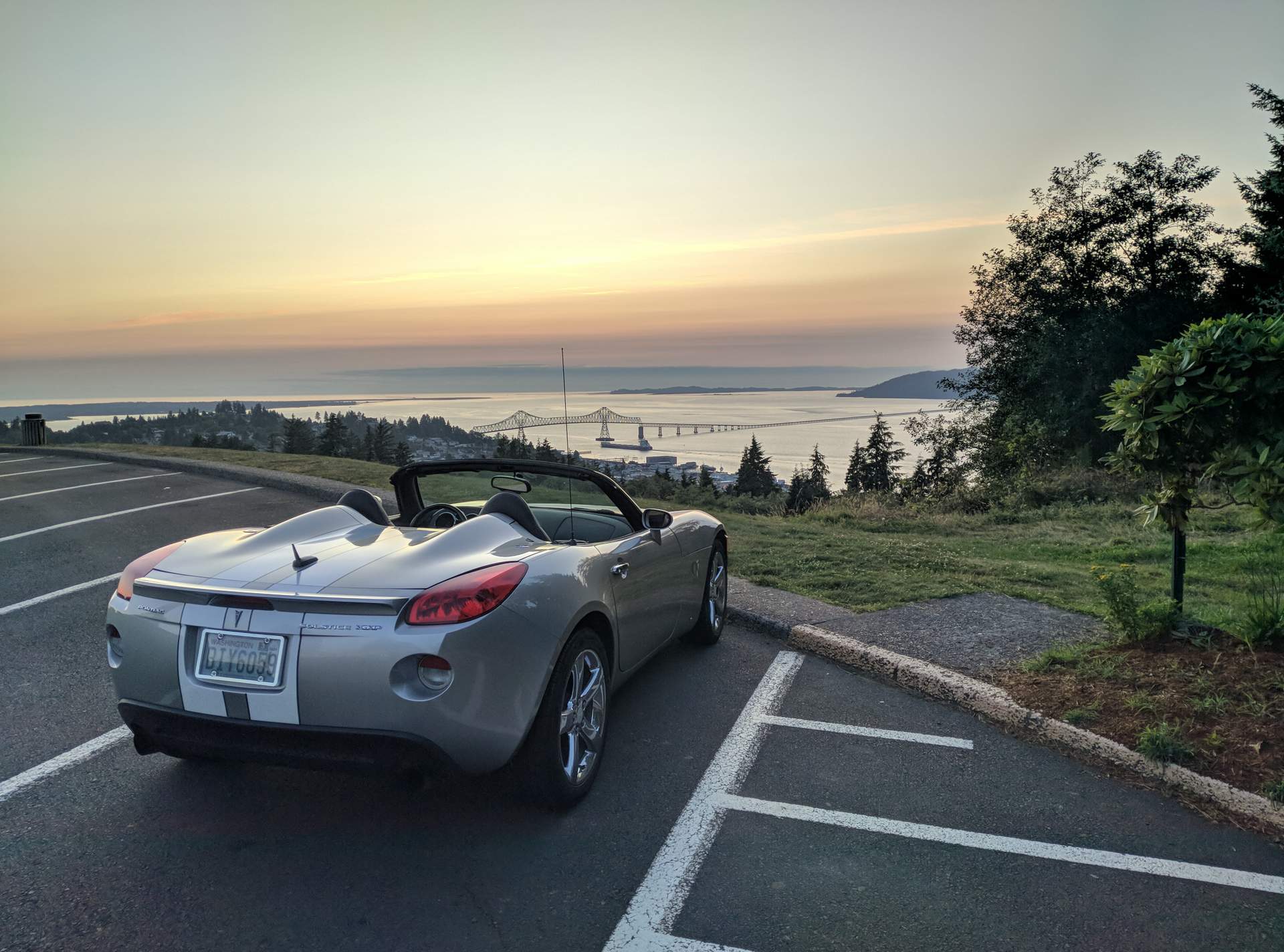
4. **Pontiac Safari: Sporty Style for the Open Road**The Pontiac Safari was another undeniable standout from the 1970s, a wagon that effortlessly blended a sporty appearance with robust performance, making it a truly captivating choice. Its design was a clever interplay of ruggedness and style, creating a unique aesthetic that instantly set it apart from the more traditional, utilitarian wagons of its era. This distinct look appealed not only to families seeking practicality but also to outdoor enthusiasts who craved a vehicle with a bit more verve and presence, solidifying its place in the hearts of many.
Under the hood, the Safari was no slouch; it came equipped with a powerful V8 engine that delivered plenty of muscle for effortless highway cruising. This wasn’t just a sedate family hauler; it had the get-up-and-go to make journeys enjoyable, maintaining that signature Pontiac “excitement” even in a wagon format. Combined with a spacious interior that could easily swallow all your gear for a weekend getaway, the Safari perfectly balanced everyday practicality with a genuinely fun and engaging driving experience, a rare feat for a vehicle of its size.
The Grand Safari, specifically introduced for 1971 following the Grand Ville sedan, further exemplified Pontiac’s approach to the wagon segment. While sharing some underpinnings with its GM siblings, it was positioned as a more upscale offering than Chevrolet’s wagons, yet a touch less opulent than Buick’s Estate. True to its era, most units proudly featured woodgrain trim, lending it that classic 70s wagon charm. In its initial years, it boasted the innovative sliding tailgate as a standard feature, though GM later evolved this to a three-way trunk lid in 1975, alongside some other design tweaks.
Pontiac’s consistent use of the “Safari” nameplate was a deliberate move to distinguish its wagons, much like Buick employed “Estate” for its luxurious offerings. This naming convention reinforced the adventurous, capable spirit inherent in these vehicles. From doing “nice hauling work” to serving as the backdrop for countless family memories, the Pontiac Safari, in all its iterations, represented a compelling fusion of robust power, practical spaciousness, and an unmistakably sporty demeanor that made it a truly memorable figure on the 1970s automotive landscape.

5. **Dodge Aspen Wagon: The Reliable, Fuel-Efficient Family Workhorse**The Dodge Aspen made its grand debut in the mid-1970s, swiftly ascending to become a remarkably popular choice in a challenging automotive landscape. This compact wagon wasn’t about flashy extravagance; it was celebrated for its unwavering reliability and impressive fuel efficiency, a critical selling point during the tumultuous oil crisis of the era. Families, ever-conscious of their budgets, deeply appreciated its inherent affordability, especially considering it achieved this without making any compromises on crucial interior space, a true testament to thoughtful design.
Sporting a clean, no-nonsense design, the Aspen Wagon offered a respectable cargo capacity that made it an ideal companion for the daily grind of errands and the joy of family trips alike. Its sensible proportions made it easy to park and maneuver, a blessing for those navigating tighter urban environments. Moreover, Dodge offered a variety of engine options, empowering buyers to select precisely the level of power that perfectly suited their individual needs, making it a supremely practical and adaptable choice for a wide spectrum of families during a decade that demanded both prudence and performance.
While the Aspen may not have consistently dominated automotive headlines with flamboyant features, it diligently served its purpose, catering to families who desired a vehicle that was both eminently practical and still retained a respectable amount of “pep.” The ability to spec it with engine options up to a potent 360ci V8 meant that this wagon truly “could move when needed,” dispelling any notions of it being sluggish. It skillfully combined sensibility with surprising capability, a balance that resonated with its owners.
The simpler, more manageable size of the Aspen Wagon was particularly appealing, making it “perfect for city dwellers with kids in town.” This made it an accessible and functional choice for a broader demographic, moving beyond the traditional suburban sprawl. Whether it was the standard model or the distinctive 1976-77 Dodge Aspen Special Edition Wagon, this vehicle consistently delivered on its promise of reliable, efficient, and adequately powered family transport, cementing its legacy as a cherished and eminently practical 1970s icon.

6. **Volvo 245 Wagon: The Unyielding Fortress of Family Safety**In an era where automotive safety was still evolving, the Volvo 245 Wagon emerged as a beacon of reassurance, quickly becoming a favorite among safety-conscious buyers. Known universally for its distinctive, unpretentious boxy design and exceptionally sturdy construction, this wagon was quite simply “built to last.” It didn’t just have a good safety record; it cultivated a powerful reputation for being “one of the safest cars on the road,” a monumental appeal that resonated deeply with families who put the well-being of their loved ones above all else.
Beneath its robust exterior, the interior of the 245 was thoughtfully designed with comfort in mind, offering generous space that made it ideally suited for those arduous long trips. Every detail seemed to cater to a secure and pleasant journey, a crucial element for families spending hours on the highway. Furthermore, its intelligent hatchback design unlocked truly “great cargo space,” providing versatile utility for everything from groceries to camping gear, reinforcing its position as a supremely sensible choice for parents who unequivocally prioritized both safety and unwavering reliability in their family transport.
The broader Volvo 240 series, of which the 245 was a distinguished member, earned a near cult-like following precisely because of its “legendary safety.” This wasn’t mere marketing; it was engineering fact. Features like innovative crumple zones, standard three-point seatbelts (a rarity at the time), and the option of anti-lock brakes (ABS) propelled it to the top of the list for “cautious parents.” Volvo was not just selling cars; they were selling peace of mind, a priceless commodity for families.
Beyond its impressive safety credentials, the 245’s famously “cubic shape” has transcended mere design, evolving into a potent symbol that “still sparks nostalgia among those who learned to drive in one.” It’s a testament to its enduring presence and impact. This wasn’t a wagon that chased fleeting trends; it set its own standard, becoming synonymous with dependability, integrity, and a steadfast commitment to protecting its occupants. The Volvo 245 Wagon was, and remains, an icon of intelligent, family-focused automotive design.
Car Model Information: 2018 Cadillac XT5 Base
Name: Volvo 200 Series
Caption: 1989 Volvo 240 GL station wagon
Manufacturer: Volvo Cars
Production: 1974–1993,2,862,573 produced
ModelYears: 1975–1993
Assembly: ubl
Predecessor: Volvo 140 Series,Volvo 164
Successor: Volvo 850,Volvo 760
Class: Mid-size car
BodyStyle: Sedan (automobile),station wagon
Layout: Front-engine, rear-wheel-drive
Platform: Volvo P platform
Related: Volvo 262C
Engine: collapsible list
Title: Petrol and diesel engines
Transmission: 4-speed manual,4-speed manual with overdrive,5-speed manual,3-speed automatic,4-speed automatic
Wheelbase: 104.3 in
Abbr: on
Length: convert
Width: convert
Height: convert
Designer: Jan Wilsgaard
Categories: 1980s cars, 1990s cars, All articles needing additional references, All articles with incomplete citations, All articles with unsourced statements
Summary: The Volvo 200 Series (designated internally as the 240 and 260 models) was a range of mid-size cars manufactured by Swedish automaker Volvo Cars from 1974 to 1993. Designed by Jan Wilsgaard, the series was developed from the Volvo 140 Series and incorporated safety innovations from Volvo’s VESC experimental safety vehicle program.
The 200 Series was produced in sedan, station wagon, and limited convertible body styles. Over 2.8 million units were manufactured during its 19-year production run, making it one of Volvo’s most successful model lines. The series established Volvo’s reputation for safety and durability, with many examples remaining in service decades after production ended.
Production overlapped with the introduction of the Volvo 700 Series in 1982. While the 260 Series was discontinued in 1984 and replaced by the 700 Series, the popular 240 model continued production until 1993. The final 240 was manufactured on 14 May 1993, concluding nearly two decades of production.
Get more information about: Volvo 200 Series
Buying a high-performing used car >>>
Brand: Volvo Model: 245 Wagon
Price: $21,937 Mileage: 23,247 mi.
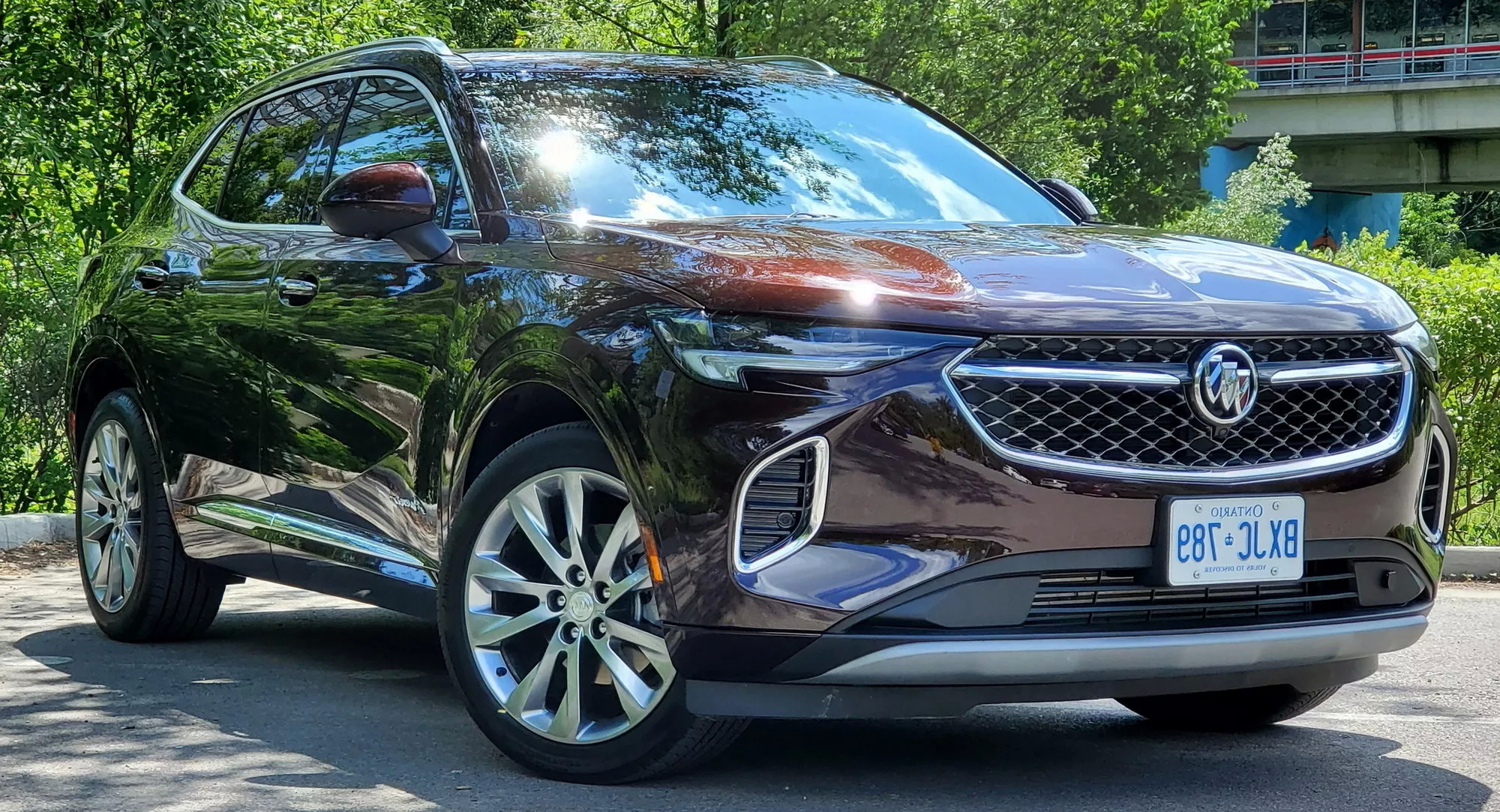
7. **Buick Estate Wagon: The Luxury Liner of the Driveway**If the 1970s had an undisputed king of luxury in the station wagon category, it was undoubtedly the Buick Estate Wagon. This magnificent machine was the absolute epitome of upscale family transport, distinguished by its elegant wood paneling and a plush, opulent interior that wrapped occupants in unparalleled comfort. It wasn’t merely a mode of conveyance; it was a grand statement, a vehicle that was effortlessly “big enough to haul everything needed for a family outing” while exuding an air of undeniable sophistication and prestige.
Underpinning this luxurious experience was a powerful V8 engine, delivering a smooth, refined driving experience that belied the wagon’s imposing size. This was a car that glided down the highway, making long distances feel effortless, marrying robust performance with an almost serene ride quality. The truly spacious interior was a testament to its design philosophy, featuring incredibly comfortable seating arrangements and an abundance of storage options, ensuring that both passengers and their belongings were accommodated in supreme style. If you desired a perfect blend of high-end style and robust functionality, the Buick Estate Wagon was, without question, the definitive choice.
The Estate wagon was legendary for its sheer scale, often featuring a forward-facing third-row seat that could comfortably accommodate “eight people,” solidifying its status as one of “the largest Buick cars ever made.” The 1970 Estate was Buick’s flagship station wagon, and at a time when Cadillac had yet to enter this segment, it stood as “GM’s most refined SW.” Its comprehensive equipment list included creature comforts like air conditioning, a stylish vinyl roof cover, and a mighty 7.5L V8 engine, all contributing to its luxurious appeal. The optional woodgrain trim, adorned with the iconic Sweepspear design on the sides, further cemented its visual grandeur.
Later iterations, such as the Buick Roadmaster Estate Wagon, continued this legacy of opulent power. This was “the kind of wagon you drove when you wanted luxury and muscle in one enormous package,” a vehicle that boasted “the heart of a Corvette-derived V8 engine” nestled within “the body of a small yacht.” Capable of seating eight, effortlessly towing boats, and decked out with quintessential woodgrain panels and even dual sunroofs, the Buick Estate Wagon represented the pinnacle of American automotive luxury and utility, a true icon that transcended mere transportation to become a symbol of affluent family adventures.
Alright, so we’ve already reveled in the glory of the first wave of 1970s wagon wonders, those colossal cruisers and sensible haulers that defined an era. But hold onto your bell-bottoms, because our journey through this golden age of family motoring is far from over. As we plunge into the second half of our retrospective, prepare to discover another eight unforgettable wagons, each with its own unique market position, enduring charm, and undeniable contribution to the rich tapestry of automotive culture. These weren’t just cars; they were statements, necessities, and often, the silent witnesses to countless family adventures.
This isn’t just a list; it’s a testament to the incredible diversity and ingenuity that flourished in the station wagon segment. From compact, sporty rebels to colossal luxury liners, and even early pioneers of what we now call global market entries, the 1970s truly had something for everyone. So, let’s fire up that nostalgic engine and continue our exploration of these magnificent machines that paved the way long before SUVs even knew what they wanted to be.
Car Model Information: 2018 Cadillac XT5 Base
Name: Buick Estate Wagon
Caption: #1977–1990
Manufacturer: Buick
Aka: Buick Super Estate,Buick Roadmaster Estate,Buick Special Estate,Buick Invicta Estate,Buick Electra Estate,Buick LeSabre Estate,Buick Century Estate,Buick Regal Estate
Production: 1940-1964,1970-1996
Class: Full-size
BodyStyle: station wagon
Layout: FR layout
Categories: 1970s cars, 1980s cars, 1990s cars, Articles with short description, Buick vehicles
Summary: Buick Estate is a nameplate that was used by the Buick division of General Motors, denoting its luxury full-size station wagon from 1940 to 1964 and from 1970 to 1996. The Estate nameplate was derived from the term country estate in wealthy suburban areas and estate car, the British term for a station wagon.
For much of its model life the Buick Estate was produced using GM B platform as the station wagon counterpart of Buick sedans; it was offered on the GM C platform from 1949–1953, then again from 1971–1976. With the exception of the prewar Buick Limited limousine, the Estate was the largest vehicle of the Buick line, combining the luxury features of Buick sedans with cargo-carrying capabilities. In line with other brands having a wagon-associated moniker, Estate became adopted by other Buick wagons (regardless of size), with the exceptions of the 1964–1972 Buick Sport Wagon and the 1982–1989 Buick Skyhawk station wagon.
Starting with model year 1947 until 1964, the Estate was offered as a station wagon on two model lines. When it returned in 1970, it was the senior station wagon to the Sport Wagon, then the name was again used on two different models in 1973 when the Sport Wagon was replaced with the intermediate-sized Buick Century Estate.
As the Cadillac Division did not offer a factory-produced station wagon in North America until 2010 (the Cadillac CTS Sport Wagon), the Buick Estate served as the flagship station wagon entry from General Motors, slotted slightly above its Oldsmobile divisional counterpart, the Oldsmobile Custom Cruiser beginning in 1971. Competing against the Chrysler Town & Country and the Mercury Colony Park, the Estate was originally produced as a wooden-body station wagon (“woodie”); from 1970 to 1996, nearly all examples were fitted with simulated woodgrain exterior trim (though technically optional). The 1996 Buick Roadmaster Estate (alongside its Chevrolet Caprice counterpart) was the full-size station wagon to remain in production and the last to offer exterior woodgrain trim. In 1976 American Motors Corporation introduced the Jeep Grand Wagoneer with similar passenger accommodation, luxury standard equipment and a simulated woodgrain appearance built on a dedicated chassis.
Following the 1996 model year, Buick discontinued the Roadmaster Estate and mid-size Century Estate station wagons, ending the use of the nameplate. Buick would not market another station wagon in the United States until 2018, rebranding the Opel Insignia as the Buick Regal TourX.
Get more information about: Buick Estate
Buying a high-performing used car >>>
Brand: Buick Model: Estate Wagon
Price: $21,937 Mileage: 23,247 mi.
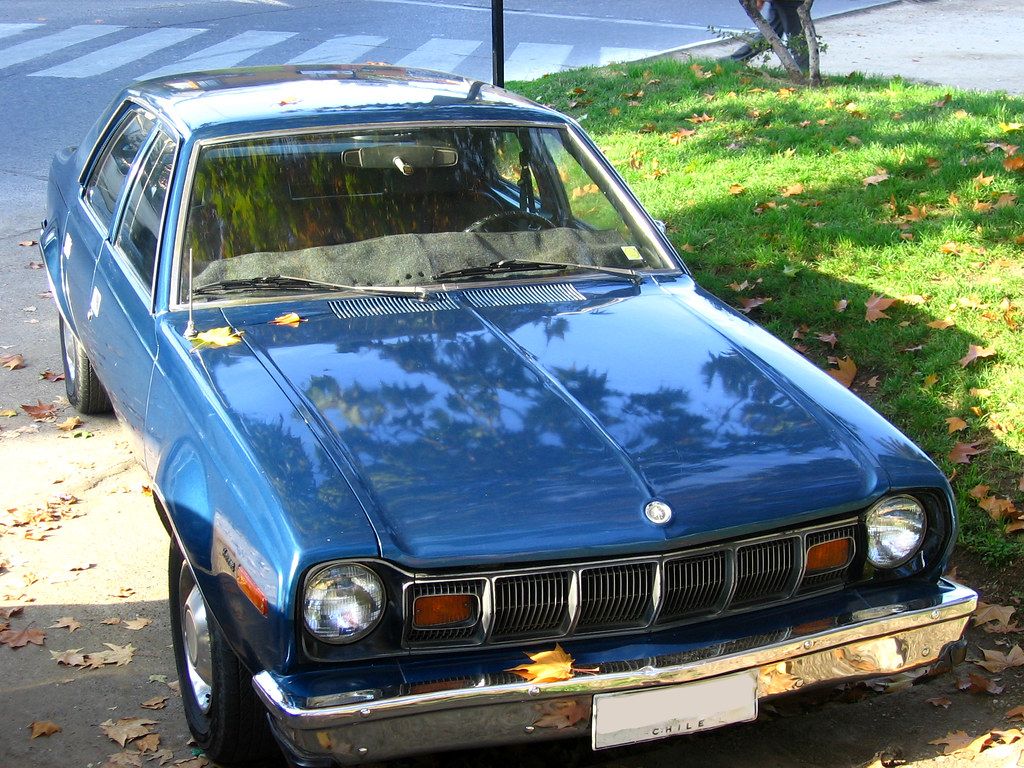
8. **AMC Hornet Sportabout: The Agile, Youthful Contender**The AMC Hornet Sportabout burst onto the wagon scene as a truly unique entry, steering clear of the traditional, utilitarian mold. Known for its compact size and unmistakably sporty feel, this wagon wasn’t aiming for the same suburban sprawl as its larger brethren; instead, it smartly carved out a niche for a younger, more dynamic audience. With a distinctive design that made it instantly recognizable, the Sportabout genuinely stood out from the crowd of more conventional wagons dominating the market at the time.
This was a vehicle that understood the evolving needs of the era, offering commendable fuel efficiency that made it a practical and appealing choice for budget-conscious buyers grappling with the decade’s economic shifts. Its clever hatchback design wasn’t just a styling cue; it provided wonderfully easy access to the cargo area, blending everyday convenience with that signature sporty aesthetic. It demonstrated that practicality didn’t have to mean boring.
The Sportabout was more than just a car; it was a vibe, an embodiment of both fun and functionality. It offered a compelling package for those who wanted a wagon that could handle daily duties with ease, yet still had enough character and efficiency to make every drive feel a little more engaging. This was AMC’s smart play for a segment of the market ready for something different, something with a youthful spirit.
Car Model Information: 2018 Cadillac XT5 Base
Caption: 1976 AMC Hornet Sportabout wagon
Name: AMC Hornet
Aka: American Motors Hornet,Mexico,Costa Rica
Manufacturer: American Motors Corporation
Production: 1969–1977
ModelYears: 1970–1977
Assembly: Kenosha, Wisconsin,Brampton,Mexico City,Port Melbourne, Victoria,Durban,San José, Costa Rica
Class: Compact car,Muscle car
BodyStyle: sedan (car),hatchback,sedan (car),station wagon
Predecessor: Rambler American
Successor: AMC Concord
Engine: {{convert,199,CID,L,1,abbr=on,AMC Straight-6 engine
Abbr: on
Transmission: Borg-Warner 35 transmission,TorqueFlite,Manual transmission,4-speed manual
Wheelbase: 108 in
Length: {{convert,179.3,in,mm,0,abbr=on
Width: 70.6 in
Related: AMC Gremlin,AMC Concord,AMC Spirit,AMC Eagle
Layout: Front-engine, rear-wheel-drive layout
Platform: AMC’s “junior cars”
Designer: Dick Teague
Categories: AMC vehicles, All articles needing additional references, Articles needing additional references from June 2025, Articles with short description, CS1: unfit URL
Summary: The AMC Hornet is a compact automobile manufactured and marketed by American Motors Corporation (AMC) from 1970 through 1977 model years in two- and four-door sedan, station wagon, and hatchback coupe configurations. The Hornet replaced the compact Rambler American line, marking the end of the Rambler marque in the United States and Canadian markets.
The Hornet became significant for AMC in not only being a top seller during its production, but also a car platform serving the company in varying forms through the 1988 model year. Introduced in late 1969, AMC quickly earned a high rate of return for its development investment for the Hornet. The platform became the basis for AMC’s subcompact Gremlin, luxury compact Concord, liftback and sedan Spirit, and the innovative all-wheel drive AMC Eagle. Its design would also outlast domestic competitors’ compact platforms, including the Chevrolet Nova, Ford Maverick, and Plymouth Valiant.
The AMC Hornet also served as an experimental platform for alternative fuel and other automotive technologies. Hornets were campaigned at various motorsports events with some corporate support. A hatchback model also starred in an exceptional stunt jump in the 1974 James Bond film The Man with the Golden Gun.
Hornets were marketed in foreign markets and were assembled under license agreements between AMC and local manufacturers—for example, with Vehículos Automotores Mexicanos (VAM), Australian Motor Industries (AMI), and Toyota S.A. Ltd. in South Africa.
Get more information about: AMC Hornet
Buying a high-performing used car >>>
Brand: AMC Model: Hornet Sportabout
Price: $21,937 Mileage: 23,247 mi.

9. **Mercury Colony Park: The Understated Luxury Yacht**When it came to upscale family transport from the Ford Motor Company, the Mercury Colony Park stood as the definitive statement. Positioned as Ford’s premium offering in the station wagon body style, especially since Lincoln eschewed the segment, the Colony Park was essentially a luxurious iteration of the Ford LTD, its design intelligently integrated with the Marquis sedan for 1969. In 1973, this opulent wagon received a fresh redesign, introducing new 5-mph bumpers and frameless door windows, a stylish nod to classic Mercury models of the late 1950s.
Luxury wasn’t just about trim; it was about innovative features, and the Colony Park truly delivered. It boasted distinctive hidden headlights, a sophisticated system that relied on a vacuum canister mechanism to keep the lights neatly tucked away when the engine was running. Crucially, in a thoughtful touch of engineering, they were designed to remain functional even in the event of a system failure, ensuring both style and safety were always at the forefront.
As a luxury take on the already grand Ford Country Squire, the Colony Park elevated the experience, offering lavishly appointed, fully vented interiors that promised maximum comfort on long journeys. As the decade progressed and safety regulations became more stringent, Mercury responded by loading the Colony Park with advanced features like airbags and sophisticated seatbelt systems, showcasing a commitment to protecting its esteemed occupants. Without a doubt, the woodgrain exterior became its signature, making it instantly recognizable as a symbol of refined, spacious family travel.
Car Model Information: 2018 Cadillac XT5 Base
Caption: 1984 Colony Park
Name: Mercury Colony Park
Manufacturer: Mercury (automobile)
Predecessor: Mercury Monterey#1955–1956
Assembly: Michigan Assembly Plant,St. Louis, Missouri,Pico Rivera, California,Metuchen, New Jersey
ModelYears: 1957–1991
Layout: FR layout
Class: Full-size
BodyStyle: station wagon
Categories: 1960s cars, 1970s cars, 1980s cars, 1990s cars, Articles with short description
Summary: The Mercury Colony Park is an American luxury full-size station wagon that was marketed by the Mercury division of Ford Motor Company between 1957 and 1991. Distinguished by its simulated wood-grain paneling, the Colony Park was marketed as either the premium-trim or the sole full-size station wagon offering of the division. Following the 1960 demise of Edsel, full-size Mercury vehicles shared bodywork with Ford; the Colony Park served as the counterpart of the Ford Country Squire through 1991.
Serving as the flagship, and more exclusive, station wagon series of the Ford Motor Company — as the Lincoln division has not offered a factory-produced station wagon — the Colony Park was marketed against the similar Chrysler Town & Country prior to its 1979 downsizing, and GM’s Buick Estate and Oldsmobile Custom Cruiser, each also offering external (simulated) woodgrain trim. During the mid-1950s and ’60s, the Mercury Commuter was briefly offered as a lower-priced alternative to the Colony Park without the simulated woodgrain appearance, but lost sales to the very similar Ford Country Sedan and Ford Ranch Wagon and was cancelled in 1968, leaving the Colony Park as the only Mercury station wagon. In 1976, American Motors Corporation introduced the Jeep Grand Wagoneer, with similar passenger accommodation, luxury standard equipment and a simulated woodgrain appearance built on a dedicated chassis.
Through the late 1980s, demand for full-size station wagons declined as consumer interests shifted towards minivans and four-door SUVs. As the Ford Crown Victoria and Mercury Grand Marquis underwent a major redesign for the 1992 model year, the two model lines dropped the station wagon body from the lineup. Up to the 2010 closure of the Mercury brand, the Colony Park was not directly replaced.
Get more information about: Mercury Colony Park
Buying a high-performing used car >>>
Brand: Mercury Model: Colony Park
Price: $21,937 Mileage: 23,247 mi.

10. **Toyota Corona Wagon: The Reliable, Efficient Import**The 1970s saw the automotive landscape broaden, and the Toyota Corona Wagon emerged as a significant player, bringing a fresh wave of Japanese reliability and efficiency to the American wagon scene. This wasn’t a vehicle focused on overt flash; instead, it built its reputation on solid, dependable performance and an undeniable practicality that deeply resonated with budget-minded families across the nation.
Its compact size was a masterstroke, making it remarkably easy to maneuver through the often-congested city traffic, a welcome relief for urban dwellers. Yet, despite its sensible footprint, the Corona Wagon defied expectations by offering a surprisingly ample amount of cargo space, proving that you didn’t need a gargantuan vehicle to handle family duties. Its design philosophy was straightforward: simple yet profoundly functional.
The Corona Wagon quickly cultivated an enviable reputation for unwavering reliability, quickly becoming a favorite among those who simply sought a dependable family vehicle that wouldn’t break the bank. It was an affordable option, yes, but crucially, it never skimped on the core tenets of practicality and longevity, fundamentally reshaping perceptions of what an imported family car could truly deliver. It was, quite simply, a sensible revolution on wheels.
Car Model Information: 2018 Cadillac XT5 Base
Name: Toyota Corona
Caption: Tenth generation Toyota Corona (T210, Hong Kong)
Manufacturer: Toyota
Production: July 1957 – December 2001
Class: unbulleted list
Related: unbulleted list
Layout: unbulleted list
Predecessor: Toyopet Master
Successor: unbulleted list
Categories: 1950s cars, 1960s cars, 1970s cars, 1980s cars, 1990s cars
Summary: The Toyota Corona (Japanese: トヨタ・コロナ, Toyota Korona) is an automobile manufactured by the Japanese automaker Toyota across eleven generations between 1957 and 2001. On launch, the Corona was Toyota’s second-highest product in their range, just below the Crown. The Corona was marketed in the JDM at Toyota’s Toyopet Store dealership channels, and the Corona was one of Toyota’s first models exported to other global markets, followed by the smaller Toyota Corolla.
The Corona played a key role in Toyota’s North American success. Having previously entered the North American passenger car market in 1957 as Toyopet, the company met little success, withdrawing in 1961. The company re-entered the North American market in June 1964, rebranded as Toyota, introducing its third-generation Corona with more modern technology and numerous standard features. Toyota advertised the car prominently, with the company’s first television commercial featuring the Corona. The car was well received, winning the 1969 Road Test Import Car of the Year. The Corona helped boost U.S. sales of Toyota vehicles to more than 20,000 units in 1966 (a threefold increase), making the company the third-best-selling import brand in the United States by 1967. In 2014, editors at Car and Driver called the Corona one of the best Toyotas ever made, arguing that Toyota survived long enough to thrive in America because of the Corona.
By 1968, the Corona name was used on a larger platform, marketed as the Corona Mark II. The Corona itself was marketed under numerous nameplates worldwide, including in European markets as Carinas, and a variant of the Corona was offered in various markets as the Carina. The Corona was ultimately replaced in Japan by the Toyota Premio; in Europe by the Toyota Avensis; and in Asia, Pacific markets, and the Americas by the Toyota Camry.
The nameplate corona derives from the Latin word for “crown”, the sedan taking its place just below Toyota’s similarly named flagship, the Toyota Crown.
Get more information about: Toyota Corona
Buying a high-performing used car >>>
Brand: Toyota Model: Corona Wagon
Price: $21,937 Mileage: 23,247 mi.
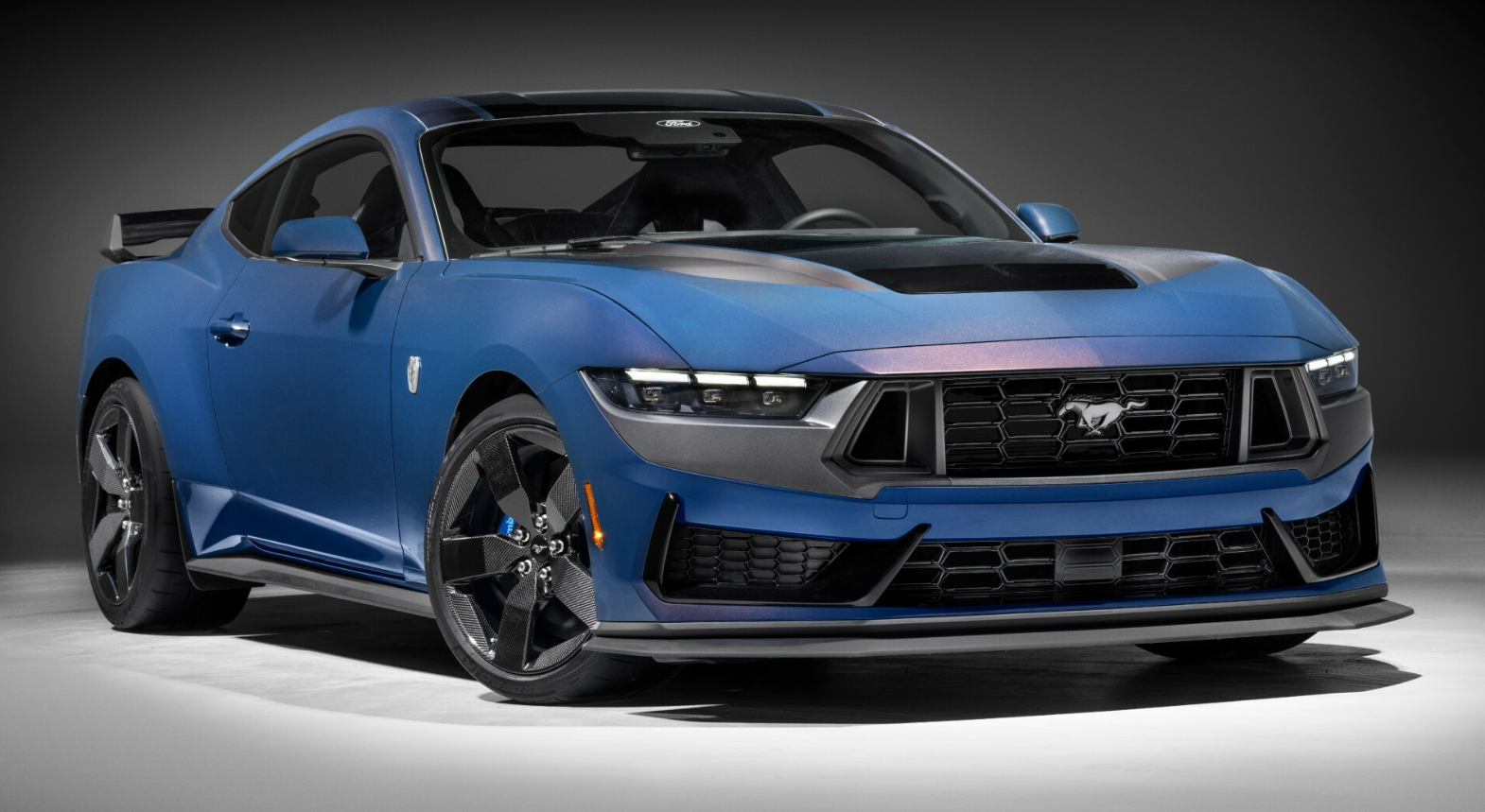
11. **Ford Torino Station Wagon: Where Style Met the Suburban Sprint**For families in the 1970s seeking a vehicle that blended pragmatic utility with undeniable panache, the Ford Torino Station Wagon emerged as a truly stylish choice. With its sleek lines and a genuinely sporty feel, this wagon refused to blend into the background, confidently standing out from the more traditional, boxier wagons of its era. It was a clear statement that family transport didn’t have to be dull; it could be dynamic and visually engaging.
Inside, the Torino was designed with the entire family in mind. Its wonderfully spacious interior could comfortably accommodate everyone, transforming long journeys into pleasant experiences rather than cramped endurance tests. Under the hood, buyers were treated to a variety of engine options, ensuring that the Torino wasn’t just about looks; it also delivered robust performance, capable of keeping pace on highways and making lighter work of hauls.
Ultimately, the Ford Torino Station Wagon offered a compelling fusion of undeniable style and practical functionality. It was the perfect companion for family outings, weekend adventures, and those everyday moments that, in retrospect, built lasting memories. This wagon was about more than just transportation; it was about the journey itself, making every drive feel like a part of a larger, cherished family narrative.
Car Model Information: 2018 Cadillac XT5 Base
Aka: Ford Fairlane (Venezuela)
Name: Ford Torino
Caption: 1970 Ford Torino Cobra SportsRoof
Manufacturer: Ford Motor Company
Production: 1968–1976
Class: Mid-size car,muscle car
Layout: FR layout
Related: Mercury Montego
Assembly: ubl
Predecessor: Ford Fairlane (Americas)
Successor: Ford LTD II
Categories: 1960s cars, 1970s cars, All Wikipedia articles written in American English, All articles with vague or ambiguous time, Articles with short description
Summary: The Ford Torino is an automobile that was produced by Ford for the North American market between 1968 and 1976. It was a competitor in the intermediate market segment and essentially a twin to the Mercury Montego line.
Just as the Ford LTD had been the upscale version of the Ford Galaxie, the Torino was initially an upscale variation of the intermediate-sized Ford Fairlane. In the 1968 and 1969 model years, the intermediate Ford line consisted of lower-trim Fairlanes and its subseries, the upper-trim Torino models. In 1970, Torino became the primary name for Ford’s intermediate, and the Fairlane was now a subseries of the Torino. In 1971, the Fairlane name was dropped altogether, and all Ford intermediates were called Torino.
Most Torinos were conventional cars, and generally the most popular models were the four-door sedans and two-door hardtops. However, Ford produced some high-performance “muscle car” versions of the Torino by fitting them with large powerful engines, such as the 428 cu in (7.0 L) and 429 cu in (7.0 L) “Cobra-Jet” engines. Ford also chose the Torino as the base for its NASCAR entrants, and it has a successful racing heritage.
Get more information about: Ford Torino
Buying a high-performing used car >>>
Brand: Ford Model: Torino Station Wagon
Price: $21,937 Mileage: 23,247 mi.
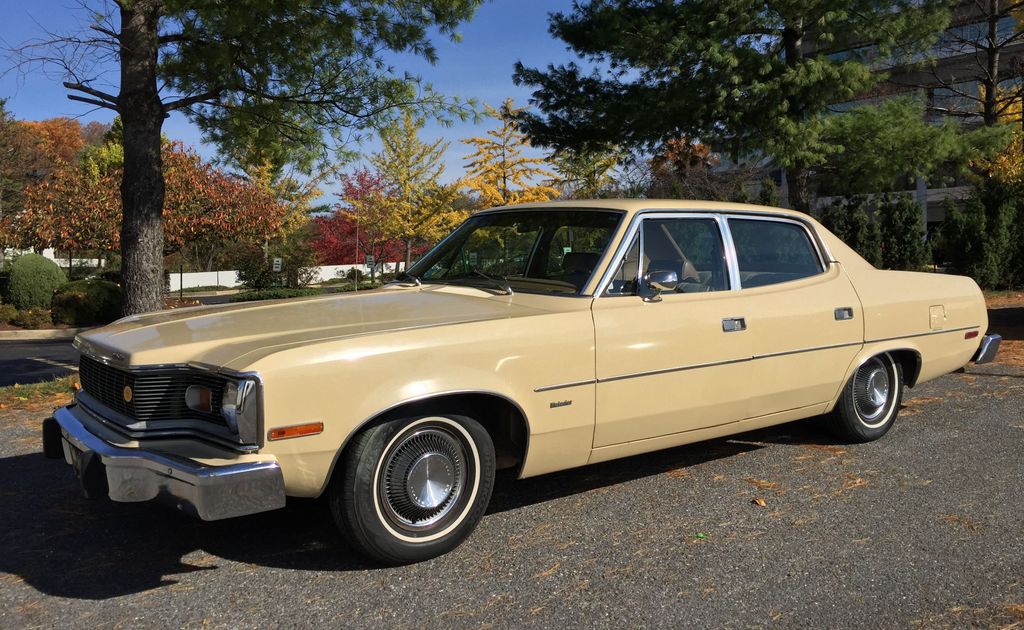
12. **AMC Matador: The Bold, Unconventional Ascent**While the Ambassador proudly served as AMC’s flagship wagon until 1973, it was the Matador that truly commanded attention through its remarkable ascension in the 1970s. The Matador line was experiencing robust sales, prompting AMC to bless it with a new generation that featured significant upgrades, effectively stepping into and elevating the role previously held by its larger sibling. This was AMC making a confident statement, proving they could innovate and capture public imagination.
This generation of the Matador was, in a word, unforgettable, largely due to its incredibly iconic front fascia. The central part of its grille and bumper clearly protruded from the rest of the bodywork, creating a distinct and almost aggressive profile. This bold styling choice was so pronounced that North Americans quickly bestowed upon these cars an evocative, if somewhat morbid, nickname: “coffin noses.” It was a daring design that certainly sparked conversation.
Beyond its striking looks, the Matador station wagon was a testament to customization and power. It offered a plethora of options, from eye-catching two-tone paint schemes and classic wood panels to a potent 5.9L V8 engine, which could even be paired with double exhaust pipes for an extra growl. This was a wagon that didn’t just haul; it asserted itself with a unique blend of style, power, and the kind of customization that truly let owners make it their own.
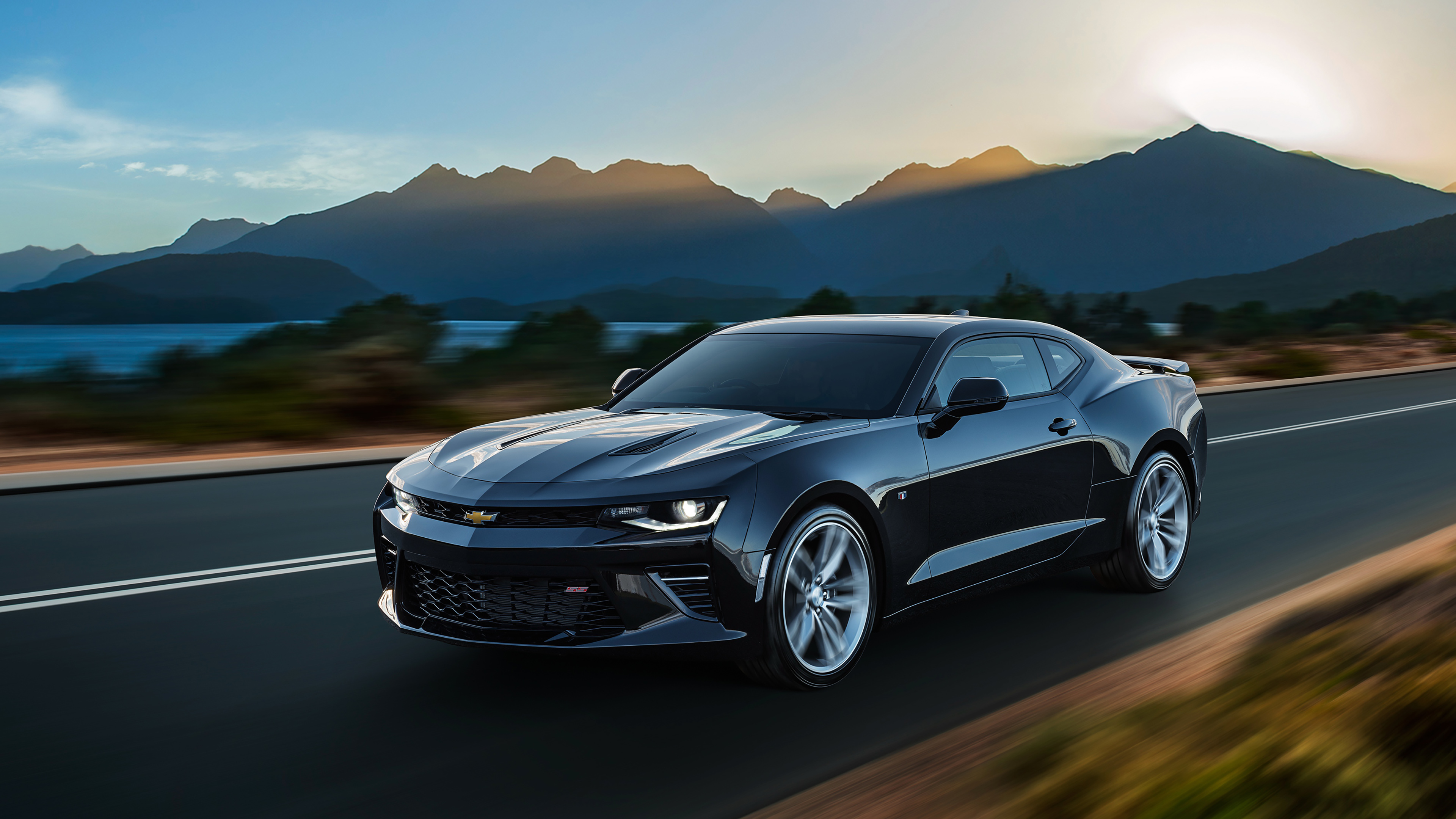
13. **Chevrolet Kingswood: GM’s Full-Size Paragon of Innovation**Among Chevrolet’s extensive lineup of wagons in the 1970s, the Kingswood, especially in its Kingswood Estate guise, was undeniably the top-tier offering, showcasing an impressive blend of luxury and practical innovation. This was the generation rooted in the second-generation Caprice, specifically released in 1971, making it one of the last opulent, full-size wagons before the automotive world was compelled to downsize in the wake of the 1973 oil crisis. It represented the zenith of big American wagons.
A standout feature that set the Kingswood apart was its exclusive “clamshell tailgate,” a marvel of engineering for its time. This ingenious system allowed the power windshield to slide seamlessly into the roof, while the manual lower section gracefully disappeared below the load floor, providing unparalleled access to the cargo area. Beyond this innovation, the Kingswood offered a host of niceties, including elegant wood trim in the cabin, a distinguished Cadillac-style front grille, and an all-coil suspension engineered for a supremely comfortable ride.
Underpinning this luxurious experience was a formidable 7.4L V8 engine, delivering ample power to move its substantial frame with authority and grace. The Kingswood was more than just a family hauler; it was a statement of refinement and capability. It truly demonstrated GM’s commitment to creating a vehicle that combined lavish appointments with cutting-edge convenience, cementing its legacy as a true icon of 1970s automotive luxury and practical innovation.
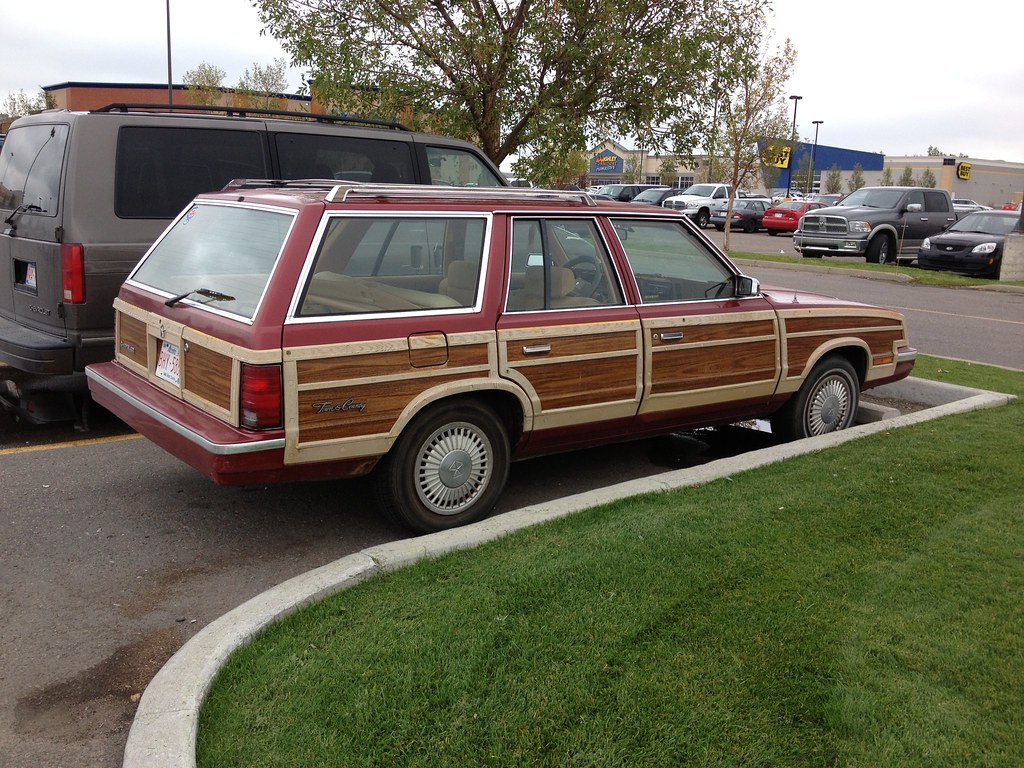
14. **Chrysler Town & Country: A Legacy of Fuselage Luxury**The Chrysler Town & Country nameplate is a storied one, a true automotive veteran that spanned from 1948 to 2016, with only a brief hiatus, cementing its place as one of the longest-running in history. For our journey into the 1970s, we focus on the pre-oil crisis generation, specifically the models released starting in 1969. These magnificent machines prominently featured Chrysler’s distinctive “fuselage design,” characterized by a noticeable and sweeping side curve that gave the vehicle a unique, integrated aesthetic.
This station wagon truly stood out with its unique front fascia, boasting stylish recessed headlights and a wraparound bumper that added to its sophisticated presence. What’s more, there was a fascinating detail under the skin: Chrysler cars of this era often shared their robust mechanical underpinnings with Imperial models, which, for those in the know, was the group’s undisputed luxury brand at the time. This crossover hinted at the premium engineering that went into every Town & Country.
By 1972, the Chrysler Town & Country had become an undeniable symbol of luxury and comfort in the early 1970s, setting a standard of refinement rarely encountered in the station wagon segment. Its signature wood paneling, sumptuously spacious interior, and array of premium features quickly made it a beloved choice among affluent American families. Power came from a formidable 7.2L V8 engine, ensuring both capable performance and a supremely smooth ride. With plush seating, a premium sound system, and advanced climate control, it offered a first-class experience, serving as a spacious, three-row, luxury liner for extended road trips and a clear symbol of success and affluence.
Car Model Information: 2018 Cadillac XT5 Base
Name: Chrysler Town & Country
Manufacturer: Chrysler Corporation
Production: 1989–2016
ModelYears: 1990–2016
Class: Minivan
Predecessor: Chrysler Town & Country (1941–1988)
Successor: Chrysler Pacifica (minivan)
Categories: 1980s cars, 1990s cars, 2000s cars, 2010s cars, All-wheel-drive vehicles
Summary: The Chrysler Town & Country is a minivan manufactured and marketed by Chrysler starting from the 1990 until the 2016 model year. It was the third Chrysler minivan model introduced in North America. The Town & Country adopted its nameplate from the flagship Chrysler station wagon line, adopting its exterior woodgrain trim as a design feature for several generations.
Marketed as the flagship of the Chrysler minivan line, five generations of the Town & Country were slotted above the extended-wheelbase Dodge Grand Caravan and Plymouth Grand Voyager. For 2017, Chrysler retired the nameplate, with sixth-generation Chrysler-division minivans becoming the Chrysler Pacifica. After the 2016 model year, Chrysler marked the sale of its 12 millionth minivan (under all three nameplates). Produced almost continuously for 75 years (except during World War II and 1989), the Town & Country nameplate is the longest-produced Chrysler; its longevity is second only to the Chevrolet Suburban in automotive history.
Chrysler assembled the first three generations of the model line in its Saint Louis Assembly facility (Fenton, Missouri). The fourth and fifth-generation Town & Country were produced by Chrysler Canada by Windsor Assembly (Windsor, Ontario).
Get more information about: Chrysler Town & Country (minivan)
Buying a high-performing used car >>>
Brand: Chrysler Model: Town & Country
Price: $21,937 Mileage: 23,247 mi.
Read more about: Giants of the Asphalt: 14 Iconic American Land Yachts Too Bulky for Today’s Cityscapes

15. **Oldsmobile Custom Cruiser: The Vista Cruiser’s Elegant Successor**For those who found the beloved Oldsmobile Vista Cruiser a bit too utilitarian – or perhaps “That ’70s Show” made it feel a touch too casual – Oldsmobile presented a truly elegant alternative: the Custom Cruiser. This upscale station wagon made its impressive debut in 1971, immediately turning heads with its sheer, commanding size. It boasted a huge body capable of comfortably seating up to eight occupants, making it a formidable presence on any driveway or highway.
The Custom Cruiser was a masterclass in leveraging GM’s internal resources, borrowing several sophisticated parts from its more luxurious siblings. It sported the distinguished front fascia from the Ninety-Eight, incorporated the refined internal trim items from the Delta 88, and even adopted the convenient retractable tailgate from the Caprice, with the added bonus of standard power assistance. This intelligent integration created a vehicle that felt bespoke, yet benefited from proven engineering.
This particular generation of the Custom Cruiser marked its final iteration before GM, like many automakers, was compelled to downsize its vehicles following the seismic shifts of the 1973 oil crisis. But before that inevitable change, the Custom Cruiser reigned supreme, offering a colossal 7.5L V8 engine, a truly plush experience, and a level of size and luxury that firmly established it as a superior choice for discerning families. It was more than just a wagon; it was a statement of sophisticated taste and uncompromising comfort on the open road.
And so, our grand tour through the very best station wagons of the 1970s draws to a close. What a ride it’s been, hasn’t it? From the wood-paneled giants that symbolized suburban dreams to the sporty compacts that dared to be different, and the luxurious liners that redefined family travel, these wagons were so much more than mere modes of transport. They were the original multi-purpose vehicles, the unsung heroes of countless childhood memories, and the undisputed champions of the open road, long before any SUV ever graced a dealership floor.
Car Model Information: 2018 Cadillac XT5 Base
Name: Oldsmobile Custom Cruiser
Caption: 1989 Oldsmobile Custom Cruiser
Manufacturer: Oldsmobile
ModelYears: 1971–1992
BodyStyle: 5-door station wagon
Platform: GM B platform
Layout: FR layout
Predecessor: Oldsmobile 88#Fifth generation (1961–1964)
Related: Buick Estate
Categories: 1970s cars, 1980s cars, 1990s cars, Articles with short description, Cars discontinued in 1992
Summary: The Oldsmobile Custom Cruiser is an automobile that was manufactured and marketed by Oldsmobile from 1971 until 1992. Marking the return of Oldsmobile to the full-size station wagon segment, the Custom Cruiser was initially slotted above the intermediate Oldsmobile Vista Cruiser, ultimately above the later mid-size Oldsmobile Cutlass Cruiser.
For three generations, the Custom Cruiser shared the General Motors B platform with the Buick Estate, Pontiac Safari, and the Chevrolet Caprice (initially Chevrolet Kingswood) station wagons. Within Oldsmobile, the Custom Cruiser shared its trim with the Oldsmobile Delta 88 and Oldsmobile Ninety-Eight. During 1985 and 1986, all three GM mid-price divisions downsized their B-platform full-size sedans, leaving the Custom Cruiser with no sedan counterpart. After the discontinuation of the Cutlass Supreme Classic, the model line became the sole Oldsmobile sold with rear-wheel drive.
Following the 1992 model year, production of the Custom Cruiser was discontinued. Alongside an extensive redesign for 1991, Oldsmobile had already initiated station wagon alternatives, introducing both the Oldsmobile Silhouette minivan (1990) and Oldsmobile Bravada mid-size SUV (1991). In total, Oldsmobile produced 451,819 Custom Cruisers over 21 years. Following the discontinuation of the model line, GM ended full-size station wagon production after 1996, becoming the final American-brand manufacturer to do so at the time.
Get more information about: Oldsmobile Custom Cruiser
Buying a high-performing used car >>>
Brand: Oldsmobile Model: Custom Cruiser
Price: $21,937 Mileage: 23,247 mi.
They represented an era where ingenuity, style, and genuine practicality converged, giving families the freedom to explore, to connect, and to simply live life to the fullest. While the automotive landscape has shifted dramatically since then, the enduring charm and cultural impact of these 70s icons remain as vibrant and compelling as ever. They remind us that sometimes, the best way forward is to take a look back, and in doing so, we rediscover the true essence of what made driving, and indeed, family life, so grand. These wagons weren’t just vehicles; they were pivotal characters in the great American story, and their legacy continues to resonate with enthusiasts who appreciate the soul behind the steel.

